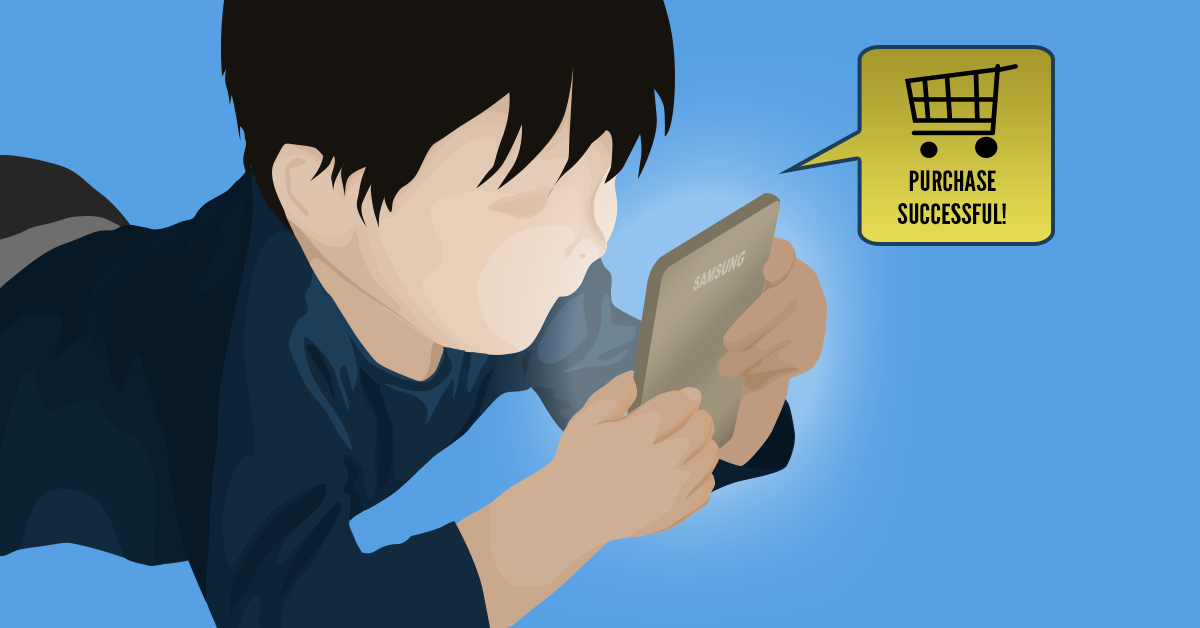 Prevent Children of Making In-App Purchases (And Draining Your Account)
Prevent Children of Making In-App Purchases (And Draining Your Account)
Kids today have grown up surrounded by tech their whole lives. Since before they are old enough to read they can pick up a tablet or smartphone and swipe at apps and games with ease. Modern children have an intuitive understanding and ability with tech that older generations can barely imagine. This ease of using technology, however, comes with a price.
Easy access to any marketplace can be a double-edged sword. The convenience and ease of use is a boost to those of us needing a quick app, but accidental purchases can cause a lot of headaches. One-click online shopping was once one of the biggest dangers our bank account faced. Now, many of us carry multiple devices, each with their own marketplace and app stores.
With modern technology, mobile applications, whether on Apple’s iOS or Google and Samsung’s Android devices, are easier than ever to buy and download. So simple in fact, that a child could (and does) do it.
Designed to Appeal – Children love to download mobile apps that feature their favourite characters, cartoons and TV shows. Ads are aimed specifically for kids in ways that will invite them to click a link and instantly download a game.
These games are often free, meaning they don’t require authentication by default before downloading. A new game can be downloaded, installed, and ready to run seconds after clicking an advertisement.
Developers commonly use, what is known in the business as, a ‘freemium’ model. This means that the game is free to download and start, but inserts paid ‘upgrades’ designed to make the player part with cash.
Freemium Games – Upgrades to games may unlock more levels, purchase in-game currency, or outfit a character with special attributes. Competitive online games commonly employ a strategy that gives paying players an unfair advantage over ones who don’t pay. This is often referred to as ‘pay-to-win’ and entices players to spend more to get on the same level.
Many mobile-based games are designed purely to encourage in-app purchasing. Some deliberately design a deceptive or tricky user-interface that makes it easy to miss-click or make purchases by accident.
There are regular stories in the news featuring kids spending thousands on in-app purchases for virtual characters. In some cases, children can use real-world money to buy items thinking they are spending in-game currency.
Apps to Help – Of course, it’s unfair to give all apps a lousy name. Many deserve it, but not all apps are guilty of behaving badly. There are fitness apps, productivity apps, and educational apps that can act as useful tools to help enhance your day. Kids can get a lot from high-quality applications in the same way educational software for the computer can be a huge classroom boost.
Getting the most out of your phone or tablet is about keeping your device safe against applications designed simply to take your money.
Secure Your Device – The best step you can take to prevent running up enormous app bills is to disable in-app purchases on your devices. This prevents applications from being able to take funds for digital items. The process to do this is simple, takes less than 2 minutes, and can save you huge amounts.
- On iOS: Enter the settings screen, tap on ‘General’. Then tap on ‘Restrictions’ and tap the ‘Enable restrictions’ option. Make sure to turn “In-App Purchases” off.
- On Android: Inside the Google Play App: press the phone menu button and go to Settings. Scroll down to “User Controls”, tap on the “Set or Change Pin” option and set a pin that only you will know.
In the “User Controls” menu check the option to “Use Pin for purchases”. Newer phones may label this pin as a password instead.
Safe Apps – With these options enabled, whether using an iOS or Android device, your phone or tablet is safe from app purchases in any hands.


 Prevent Children of Making In-App Purchases (And Draining Your Account)
Prevent Children of Making In-App Purchases (And Draining Your Account)